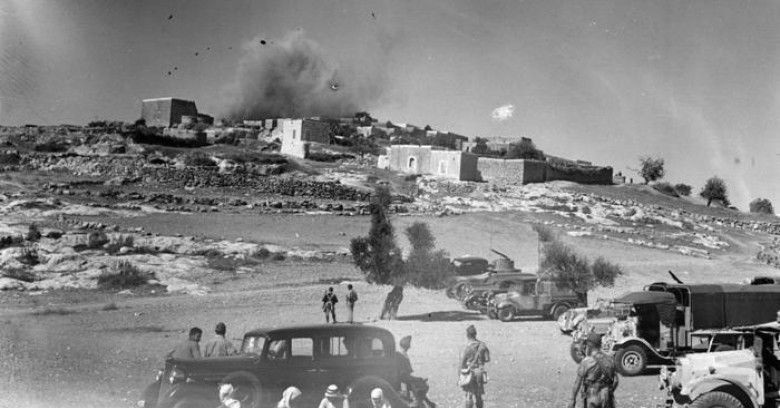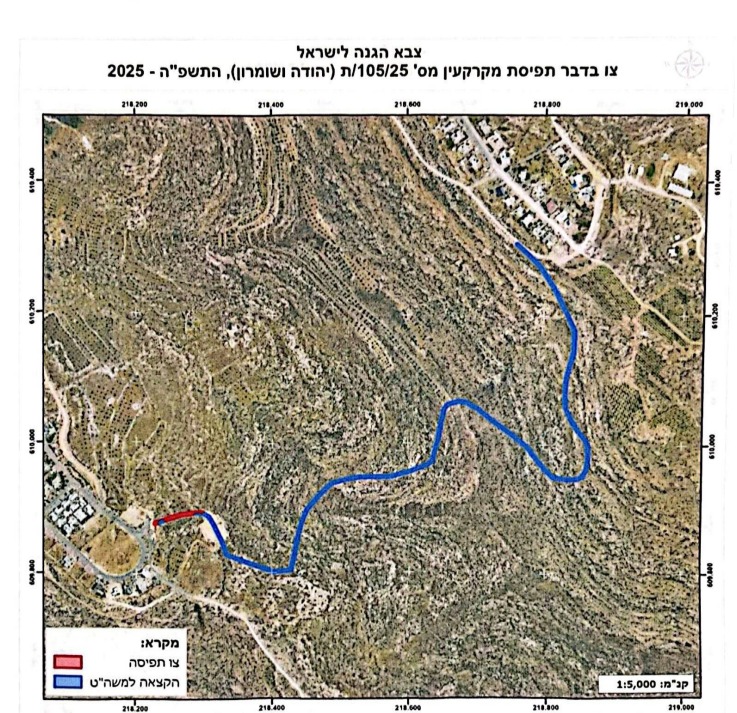JERUSALEM, January 15, 2010 (WAFA)- This week, (January 6-12) Israeli forces injured 21 Palestinians throughout the West Bank. This figure is slightly above the weekly average of 17 Palestinian injuries during 2009, UN Office for the Coordination of Humanitarian Affairs (OCHA) reported .
Seven of this week’s injuries, including two boys, occurred during one incident in which, Israeli forces physically assaulted a group of Palestinians grazing their sheep in the vicinity of the Havot Maon settlement outpost near Twani village (Hebron); two of the seven suffered from inhalation of tear gas shot by the soldiers after other residents gathered at the scene. Another eleven injuries occurred as a result of clashes with Israeli forces during a peaceful protest against the expansion of Hallamish settlement in the Ramallah area (eight injuries) and in weekly anti‐Barrier demonstrations in Bil’in (two), Ramallah governorate, and Al Ma’sara (one), Bethlehem governorate.
The remaining three injuries were sustained in three separate incidents at ʺflyingʺ (ad hoc) checkpoints in the southern West Bank, including a man and a 17 year‐old boy who were shot with live ammunition; the former was shot after allegedly refusing to stop and the latter after allegedly throwing a Molotov cocktail at a checkpoint. ʺFlyingʺ checkpoints are usually more disruptive than permanent checkpoints, as they are unpredictable and checking procedures at them are sometimes more time‐consuming. This week, 95 such checkpoints were deployed by Israeli forces throughout the West Bank, compared to a weekly average of 65 during 2009.
On four separate occasions during the week, Palestinians threw stones at Israeli forces at Qalandiya checkpoint, the main entrance through the Barrier into East Jerusalem from the north. While no injuries were reported, one of the incidents triggered the closure of the checkpoint for ten hours (from 8 pm until 6 am).
Israeli forces conducted 100 search operations inside Palestinian villages, the majority of which took place in the northern West Bank (69), the same as the weekly average during 2009. In one of the operations, the Israeli army raided Ramallah City center (in Area A, under Palestinian security responsibility) and searched an apartment inhabited by internationals, arresting a Czech national, allegedly after her visa had expired; the woman was later deported.
Significant decline in settler-related incidents This week, there was a significant decline in the number of settler‐related incidents affecting Palestinians (six), compared to the previous week (11), resulting in one injury. A further ten incidents affecting settlers were recorded during the week, leading to the injury of one settler.
On 6 January, a group of settlers from Gil’ad Farm outpost (Nablus) physically assaulted and injured a 70‐year‐old man while working on his farm in the proximity of the outpost. In another incident, settlers harassed a group of Palestinian farmers while they were working on their land in Abu Rish Valley (Hebron), causing the farmers to leave their land; this week, Israeli forces declared the valley a closed military zone.
Also this week, settlers from Hallamish settlement (Ramallah) uprooted approximately 200 olive trees, located near the settlement, belonging to farmers from An Nabi Saleh and Deir Nidham villages (Ramallah). This incident occurred in the wake of the aforementioned demonstration that took place earlier against the expansion of the settlement, during which settlers stoned Palestinian demonstrators, while Israeli troops present on the spot did nothing to protect the Palestinians from the settler stoning.
Lack of adequate law enforcement against violent Israeli settlers continues to be of concern. The Israeli media reported that the Israeli police decided to close the main investigation file on an attack perpetrated by Israeli settlers in September 2008, due to the “lack of evidence”. In this incident, which followed the stabbing of an Israeli child in the settlement of Yitzhar by a Palestinian, dozens of settlers marched into the nearby village of ‘Asira Al Qibliya (Nablus), setting fire to houses, breaking windows, cutting water pipes and vandalizing home gardens. The former Israeli Prime Minister Ehud Olmert referred to the attack as a ‘pogrom’.
Also this week, there were ten separate incidents involving Palestinians throwing stones towards Israeli vehicles driving on West Bank roads near Palestinian villages in the Ramallah, Nablus and Hebron areas, one of which led to the injury of an Israeli girl. Vehicles were damaged in six of the incidents.
On January 10, Israeli forces demolished the homes of 100 Palestinians, including 34 children, in the community of Khirbet Tana (Nablus) in the Jordan Valley. The demolitions included 16 residential structures, the village school, 12 animal pens, two kitchens and a restroom. In addition, the community itself was forced to self‐demolish three residential tents. The affected population is currently staying in tents that they erected on the site. They have received emergency assistance, but will require further assistance to meet basic needs, including alternative schooling for the children.
Khirbet Tana is a community of herders and farmers living for several decades in the area, which since the late 1980s has been designated by the Israeli army as a “closed military zone” for military training (“firing zone”). Almost the entire community was previously displaced in July 2005 as a result of demolitions, however residents rebuilt their houses. The previous week, another community in the same area (Livjim, east of Tal Al Khashabeh) received eviction orders against three structures, placing 29 persons, including 23 children, at risk of displacement.
Over 80 percent of the Area C demolitions in 2009 occurred in areas declared ʺfiring zonesʺ. Many of these areas, which amount to some 18 percent of the West Bank have been “closed” for a number of years, though numerous residents report that they have never seen the Israeli military training in their vicinity1. Many of the communities residing in these areas have been there before 1967 and the declaration of the areas as closed. They are some of the poorest communities in the West Bank, relying on small scale agriculture and herding for their livelihoods.
In Gaza Strip, This week was the deadliest one recorded in the Gaza Strip since the week following the January 18, 2009 ceasefire that ended Israel’s “Cast Lead” offensive. In a series of airstrikes carried out during the week, Israeli forces killed seven Palestinians, including three civilians. These attacks came in response to an increase in the number of mortar shells and rockets fired by Palestinian factions from the Gaza Strip into southern Israel; no injuries or property damage were reported. Since the ceasefire, a total of 84 Palestinians, including at least 27 civilians, and one Israeli (a soldier) have been killed and another 160 Palestinians and seven Israelis have been injured in the context of the Israeli‐ Palestinian conflict in Gaza and southern Israel.
On January 8, Israeli air forces targeted and bombed tunnels under the Egypt‐Gaza border, killing three Palestinians, including a 15 year‐old boy, and wounding another two. Another Palestinian sustained injuries in a separate airstrike incident on tunnels. In two other incidents, on January 6 and 10, Israeli aircrafts targeted and killed four Palestinian militants, three of whom were killed in one airstrike. Five additional airstrikes, resulting in no casualties, were carried during the week. Also this week, on four separate occasions, Israeli forces penetrated a few hundred meters into Gaza and conducted land‐leveling operations.
On January 7, the Israeli airforce dropped leaflets into areas next to the border fence, warning residents to keep a distance of at least 300 metres from the border with Israel and avoid cooperating with “smugglers” in the tunnels under the Gaza‐Egypt border. The access ban to the “buffer zone” was extended to 300 meters, up from 150 metres previously, in May 2009; in practice, Israeli forces have occasionally opened “warning” fire at people as far as 1,000 meters from the border. A parallel ban is applied to sea areas beyond three nautical miles from the coast, though often this distance is less in practice. This week, in nine separate incidents, Israeli naval forces opened “warning” fire at Palestinian fishing boats along Gaza’s coast, forcing them to return to shore.









